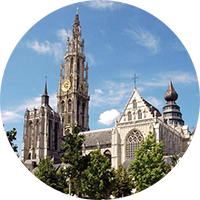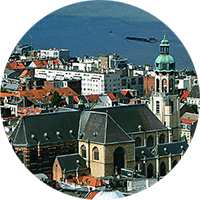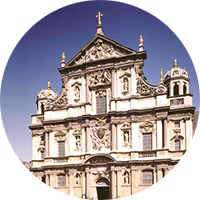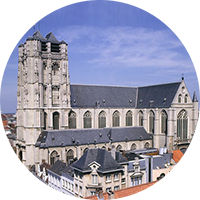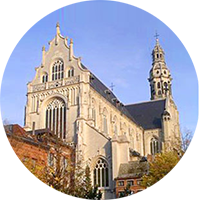Five historic churches within walking distance
This website introduces you to a world-class ensemble: five monumental historic churches in the centre of Antwerp: each with its own personality and story, and all within walking distance! Discover peerless architecture and captivating works by outstanding artists.
The five churches are also home to vibrant Catholic faith communities. So, as well as beauty and wonder, you will find inspiring liturgy, silence and prayer, offering you a moment of peace.
Cathedral of Our Lady St. Andrew’s Church St. Charles Borromeo Church St. James’ Church St. Paul’s Church
Discover the highlights
A total aesthetic and spiritual experience
The five monumental churches have a special character compared to others in the city: they were built before the French Revolution and continue to play their original role as Catholic places of worship. What makes these buildings unique is the way they merge the spiritual with the cultural and the artistic.
Art in situ
The five monumental churches are the city’s architectural crown jewels, constructed with immense care and craftsmanship. As you enter these largely Gothic church buildings, you will encounter an inexhaustible wealth of visual art, packed with recognizable emotions and brilliant details. Unlike museums, these are not simply repositories of art works, but places where you can admire religious masterpieces in situ, in the very locations for which they were commissioned and made centuries ago.
A visit to the five monumental churches offers you an exceptional survey of the culture of the Southern Netherlands: from the largest Gothic church in the Low Countries to the region’s textbook example of Baroque church architecture and every manner of revivalist style.
Peter Paul Rubens
The monumental churches owe their fame not least to the paintings that Peter Paul Rubens (1577–1640) made as part of the magnificent decoration of these buildings, through which he introduced the Baroque style from Italy to Antwerp. Originally intended as a medium for propagating the faith, paintings like the Return of the Holy Family, the Raising of the Cross, the Descent from the Cross and the Assumption of the Virgin gradually became iconic works. The fact that Rubens’ art was displayed in public and that the compositions also circulated in the form of prints meant that they swiftly cemented his name and reputation.
Rubens also had personal ties with the monumental churches of Antwerp. He practised his religion there and marked his family’s joys and sorrows in them.

